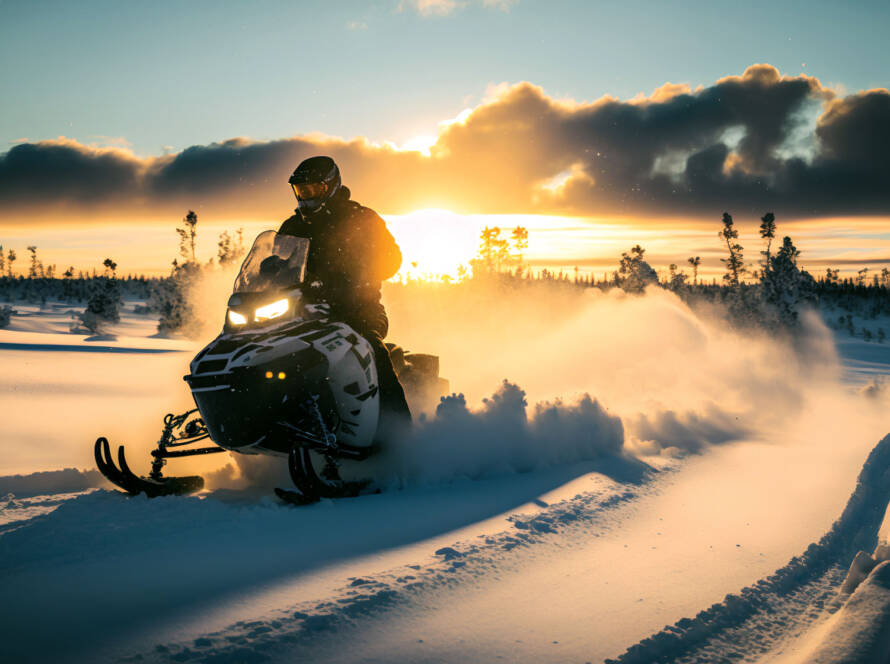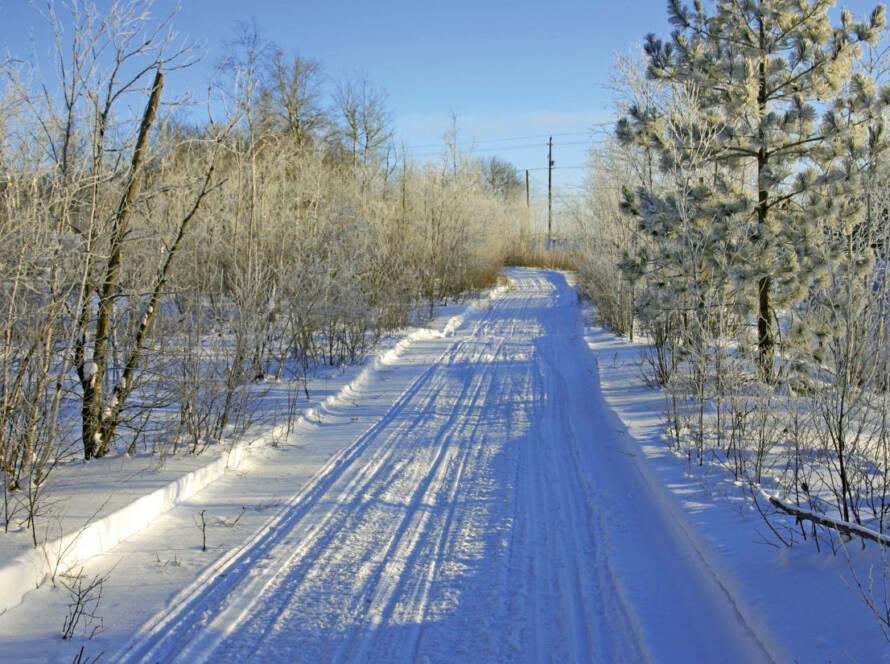If you’ve never been to the Wenatchee Valley or the trails in the Stemilt-Colockum area in Washington State, then you are in for a real treat. The valley contains miles of craggy mountainsides, cascading rivers and spectacular sunrises and sunsets. At the center of the activity is the Apple Country Snowmobile Club.
Founded as a non-profit in 1973, the club has been dedicated to supporting local snowmobile opportunities by developing trail systems, working with landowners and state agencies, and advocating for legislative changes.
“In the early years, we had over 100 families and recently had a resurgence to around 80 families,” said volunteer Jim Burts. “We started grooming under contract with Washington State Parks that fall (1973) and have focused on grooming and maintaining access since then. Our focus has changed so, while still grooming, we are spending much more time maintaining access to our riding area.”
The club grooms just less than 100 miles of trail in about 60,000 acres of mostly public land. The terrain starts at 2,500 feet and reaches 6,800 feet with the majority of the riding area above 4,500 feet.
With such a large area to groom, the club is contracted by the Washington State Parks’ Winter Recreation Program and works in collaboration with the landlord: the Washington Department of Fish and Wildlife. The club’s grooming is primarily funded by snowmobile registrations and a portion of the fuel tax paid by snowmobilers.
The club employs a full time groomer-operator and pays an honorarium for the assistance of two volunteers on an as-required basis.
“We are fortunate they can work on the machines,” said Burts. “We do almost all maintenance and repair ourselves. Signage and trail maintenance are usually done by volunteer work parties. Our snow parks are usually plowed by the county road crew under contract with the Winter Recreation Program.”
The club has a few qualified volunteer operators that groom as needed and all its events are all run by volunteers. Burts says the riding area gets lots of summer use. Unfortunately, its map boards are frequently vandalized, so the club has stopped maintaining them until after grooming begins.
All of the grooming is done over existing roads in rocky terrain. Burts says this is because many of the roads are narrower than the equipment and with the steep terrain, off-road excursions would be “disastrous.”
The club’s machines
The club owns three Bombardier groomers: a BR180, BR275 and BR350.
Members purchased the BR180 new in 2003 and pulled a 10-foot drag when it was the club’s primary machine. However, the cat proved to be underpowered on steeper trails.
“We also experienced a lot of broken cleats because we were pulling too hard, especially in rocky conditions,” said Burts. “This machine now uses a packer bar out back and [a] front blade. Because it is narrow, we use this exclusively on two of our narrow loop trails. This machine is also used by our volunteers to do main system grooming when the paid staff is off. Because it is easier for riders to get around it, we use it during high traffic days.”
The BR275 was purchased used with a 14-foot tiller and front blade. The club cut the tracks down to 12 feet and with a skilled operator this machine makes outstanding trails. Burts notes that the machine has many hours logged and the club is beginning to experience reliability issues.
The club purchased the BR350 with under 10,000 hours last year and after some initial challenges, it has become a “wonderful” machine.
“It is 30 percent more fuel efficient [than] the BR275 and the ergonomics are great. The cab is quiet and has extra room to keep some of our emergency gear and personal items inside. In a pinch, three people can ride inside without having to perch on someone’s lap. This machine is also cut down to 12 feet wide, but maintains the 14-foot blade and tiller system. It also creates wonderful trail.”
Since the club works on borrowed property, the operators are always careful to avoid fuel and oil spills. The new machine burns significantly less fuel and runs cleaner to help decrease its carbon footprint.
Under the club’s rules, all operators must have 75 hours of on-the-snow training before they can run solo. New operators must also pass the Guidelines For Snowmobile Trail Groomer Operator Training program created by the American Council of Snowmobile Associations. Each groomer has a reporting GPS unit that gives minute-by-minute position reports via satellite. All operators have first aid/CPR training.
Inside each of Apple Country’s groomers is a first aid kit, chain saw, hard hats and high-visibility vests. Operators also carry tool kits and traffic cones to warn riders of dangerous conditions.
Since the club is covered by the Occupational Safety and Health Administration and the State Department of Labor and Industries, it must follow all state and federal employee safety requirements. Its primary operator is also a retired Alcoa safety coordinator.
Search and rescue
The club is involved with search and rescue under the Chelan and Kittitas counties and several members are International Organization for Standardization-certified for emergency call out.
“This was part of our initial charter,” said Burts. “We train with the Chelan County Sheriff’s Department. However, we have been fortunate in our area to have very few call outs. Sadly, our most recent search and rescue turned into a fatality when we were unable to locate an 87-year-old rider before he succumbed to hypothermia. That experience led to significant changes in the county’s response to lost riders and new equipment, including airborne infrared systems that have improved search results.”
He added that the club works hard to resolve issues before they become emergencies and the operators always check on riders and offer assistance when needed. They have towed several sleds out and given a few rides back to the snow parks. “The groomers are slow, but a lot better than a night in the snow.”
Like many organizations, volunteer participation is a big concern. Burts said that while they have lots of new riders and members, only a few people do the work and that group is aging. “At 61, I am one of the youngest of the eight [who] maintains the machines,” he said.
Another issue is land use, which has been a major battle over the last five years since non-motorized users want to prohibit the club from its traditional riding areas.
“In 2017, non-motorized users wanted nearly half of our riding area including all of the best high altitude bowls. They even wanted one of our two snow parks. Our riders rallied to resist this takeover and a compromise was approved by the governing agencies. We expect this battle to continue since the plan is scheduled for biannual reviews.”
Despite the work and responsibilities, Burts says that the club remains a lot of fun. There are plenty of rides, an annual Christmas party and this year they will be hosting the Winter Recreation Snowmobile Advisory Committee meeting with a guided tour of the trail system and a barbeque on the mountain. Club members also attend the Washington State Snowmobile Association meeting in the nearby city of Chelan.
Membership is $15 a year per family and all events are family friendly. Membership can be paid through the club’s website at www.applecountrysnowmobileclub.com. Burts says the club recently started an ambassador program that pairs an experienced rider with people who are unfamiliar with the trail system.
“We will continue to lobby support for snowmobile activities with our state, city and county legislators to maintain and expand riding opportunities,” said Burts. “And, above all, we will continue to have fun on the mountain.”
Photos courtesy of Apple Country Snowmobile Club

